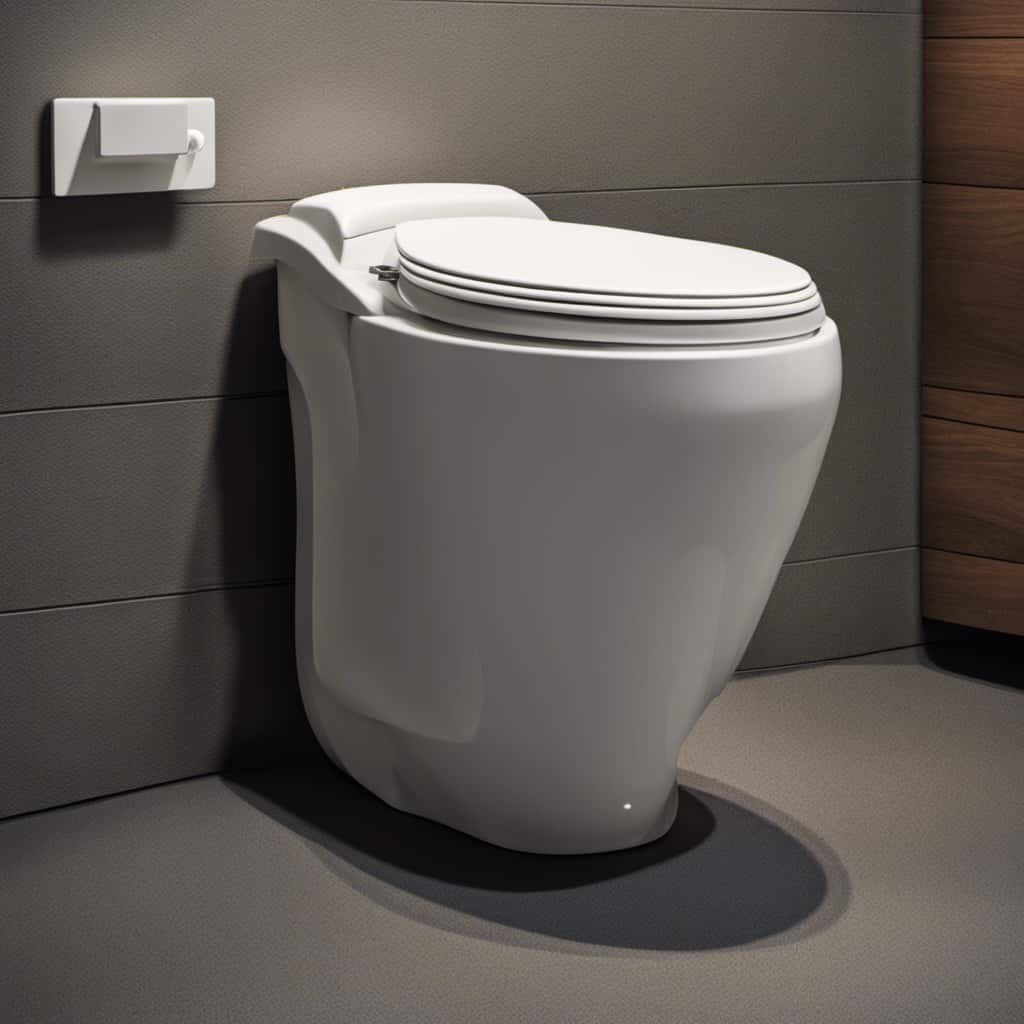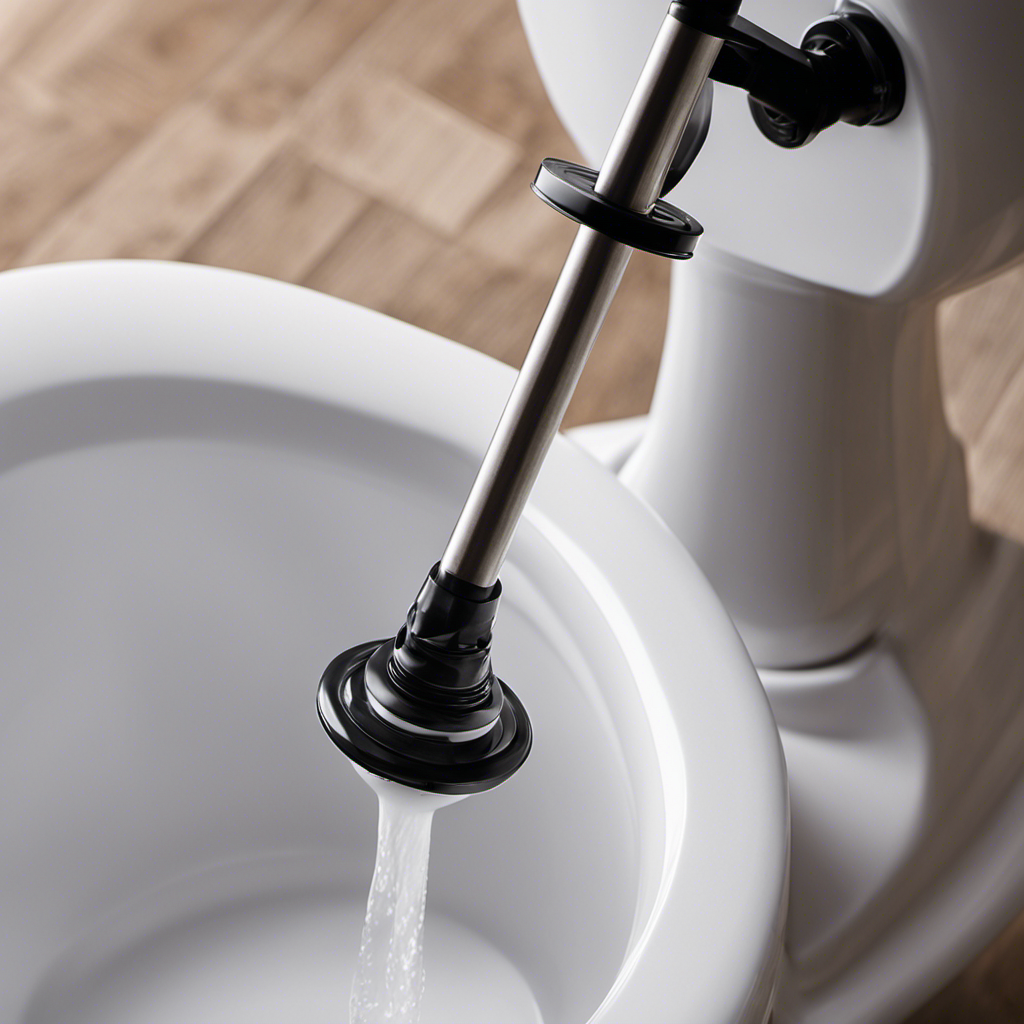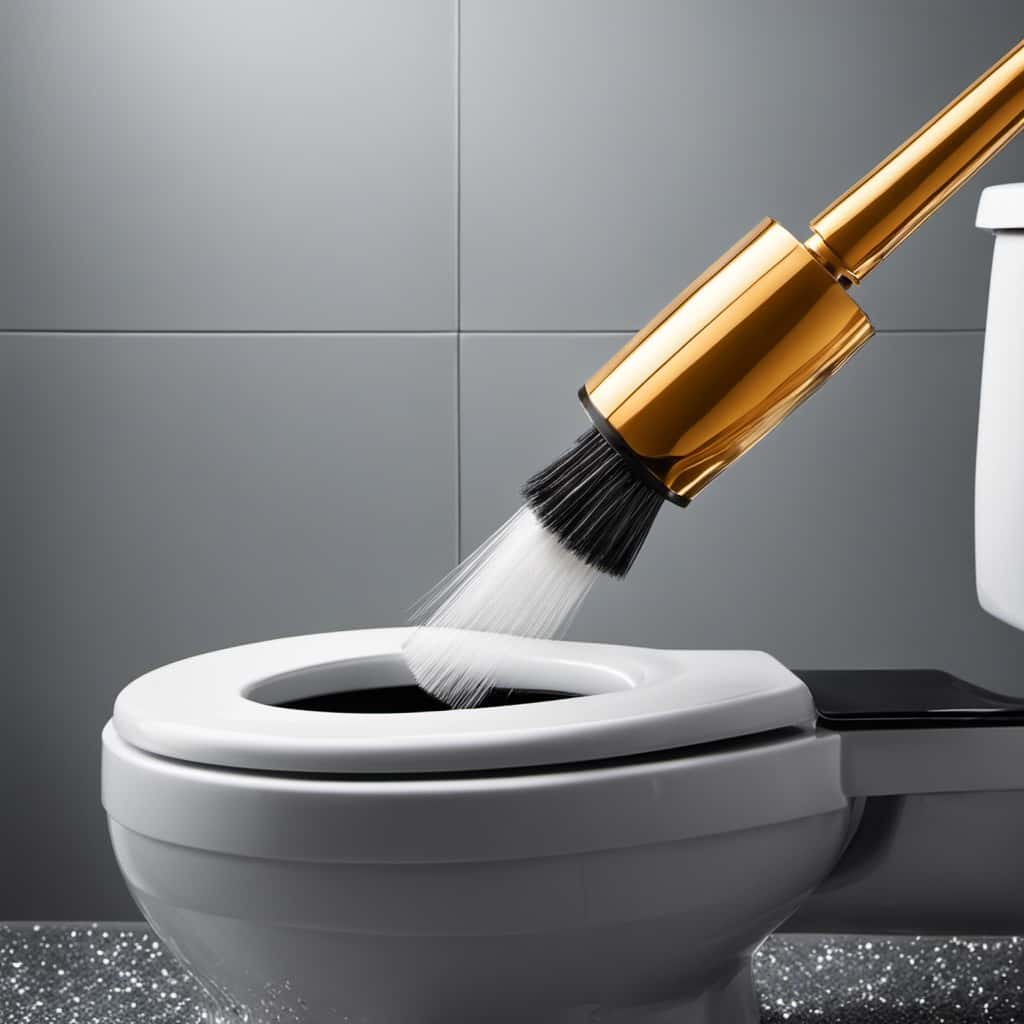Ladies and gentlemen, gaze upon the ancient wonder of the traditional toilet flush mechanism! In this article, we, the enlightened experts in plumbing, will lead you through the complex functions of this relic from the past.
Prepare to delve into the common issues that plague these valves and discover the benefits of upgrading to a modern flush valve.
Our mission is to empower you with the mastery of toilet maintenance, ensuring a smooth and efficient flushing experience.
Key Takeaways
- Old style flush valves were made of brass or cast iron and operated by a lever or pull chain.
- Common issues with old style flush valves include weak flush, constant running water, leaking water, and stuck handle.
- Upgrading to a modern flush valve offers improved water conservation, better flushing performance, and enhanced hygiene.
- Maintenance tips for a new flush valve include proper installation, regular cleaning, vigilance for leakage or malfunction, and prompt troubleshooting and addressing of issues.
Understanding Old Style Toilet Flush Valves
To better understand old style toilet flush valves, we’ll explore how they function and the common issues that can arise.
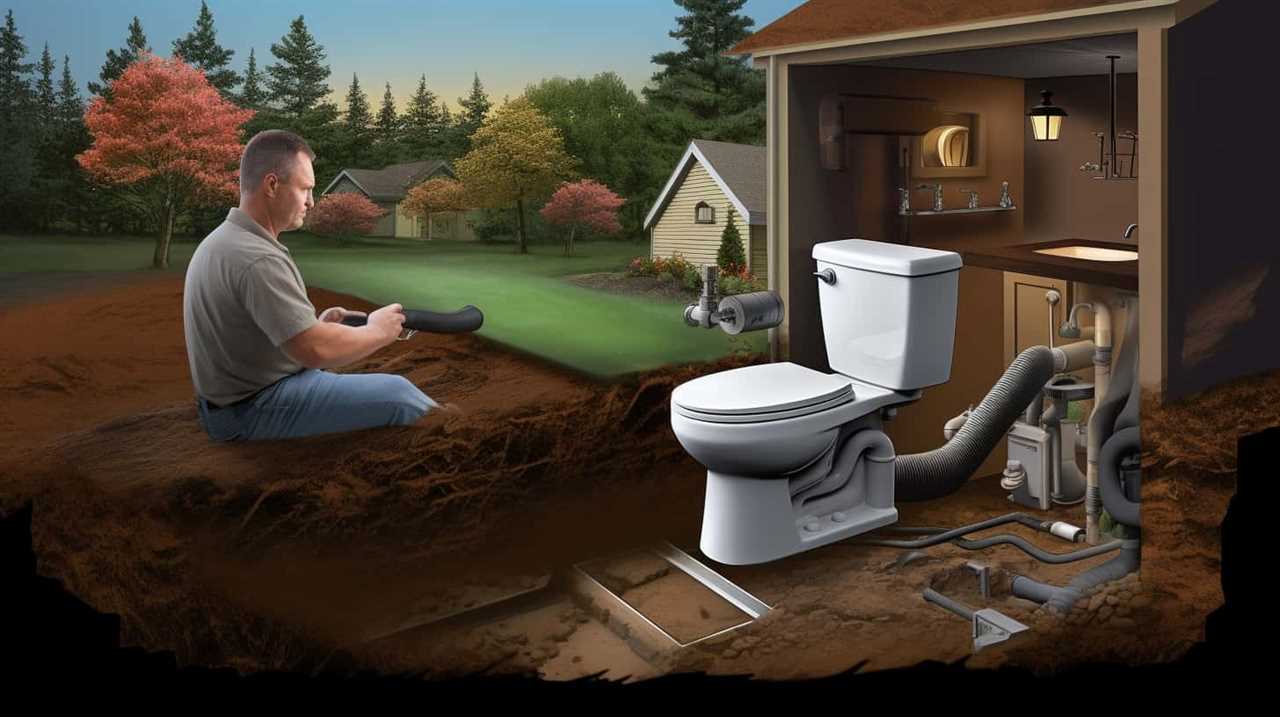
Antique flush valves, known for their historical significance, were the predecessors of modern flushing mechanisms. These valves were typically made of brass or cast iron and operated by a lever or a pull chain. When the lever or chain was activated, the valve would open, allowing water to rush into the toilet bowl, creating a powerful flush. The historical significance of these old style flush valves lies in their role in improving sanitation and hygiene during a time when indoor plumbing was still a novelty.
Now that we’ve discussed the historical context, let’s delve into the common issues that can be encountered with these old style flush valves.
Common Issues With Old Style Flush Valves
Now, let’s delve into the common issues that can arise with these old style flush valves. When it comes to repairing old style flush valves, it’s important to be aware of the common problems that may occur. Here are some troubleshooting tips to help you address these issues:
- Weak flush: If the flush seems weak or incomplete, check for any clogs or blockages in the valve or pipes. Clearing these obstructions should restore proper flushing.
- Constant running water: If the valve is continuously running, it could indicate a faulty flapper or a worn-out seal. Inspect these components and replace them if necessary to stop the water from running.
- Leaking water: A leaky valve can waste water and lead to higher bills. Check for any cracks or damaged seals in the valve body. Replace any faulty parts to prevent further leakage.
- Stuck handle: If the handle is difficult to push or gets stuck, it may be due to a buildup of mineral deposits or a faulty handle mechanism. Clean or replace the handle to restore smooth operation.
Upgrading Your Old Style Flush Valve
When upgrading our old style flush valve, we should consider replacing it with a more efficient and modern model. Upgrading to a modern flush valve offers several benefits, including improved water conservation and better performance.
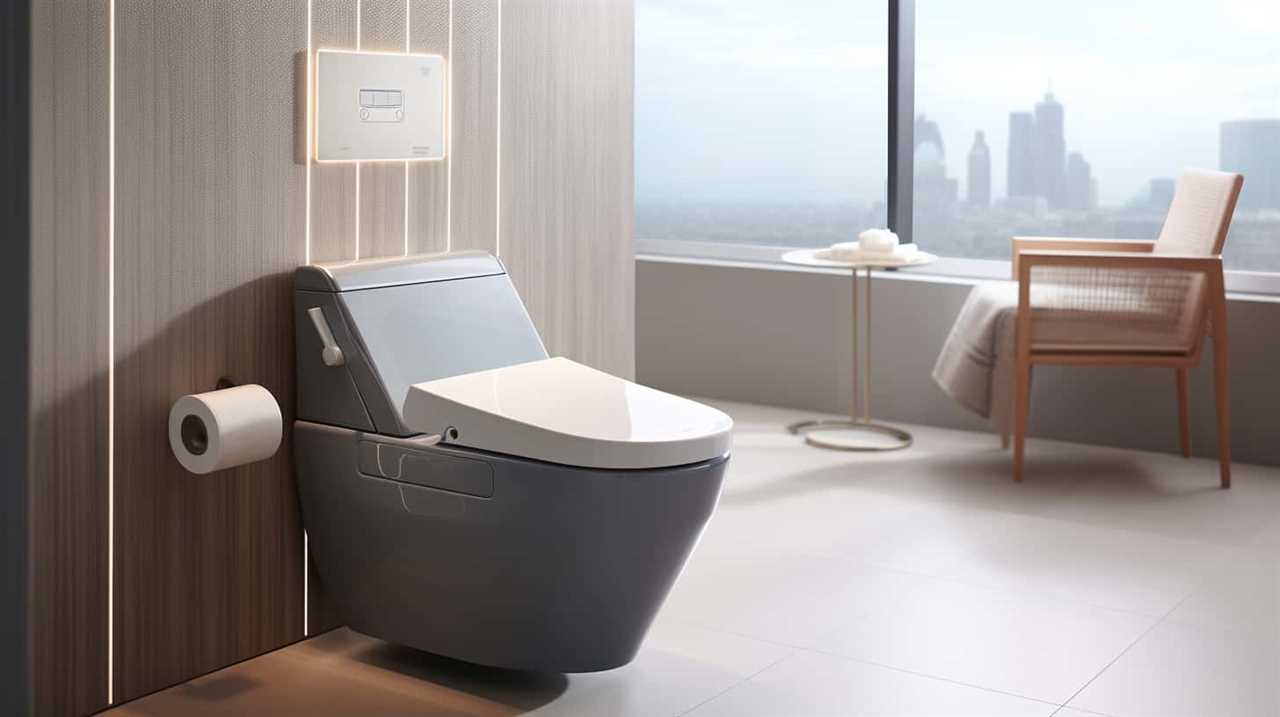
DIY flush valve installation is a relatively simple process that can be completed with basic tools and a little bit of know-how. Before installing the new flush valve, it’s important to troubleshoot the old style flush valve to identify any underlying issues. Common problems with old style flush valves include leaks, weak flushing power, and inconsistent water flow. By addressing these issues and upgrading to a modern flush valve, we can ensure a more efficient and reliable toilet system.
Now, let’s explore the benefits of upgrading to a modern flush valve.
Benefits of Upgrading to a Modern Flush Valve
As we upgrade our old style flush valve, we can enjoy a range of benefits by switching to a modern flush valve. Here are four reasons why upgrading to a modern flush valve is a smart choice:
- Water Saving Features: Modern flush valves are designed with water conservation in mind. They use advanced technology to optimize water usage, reducing the amount of water wasted with each flush. This not only helps the environment but also saves you money on your water bill.
- Improved Flushing Power: One of the most significant advantages of upgrading to a modern flush valve is the improved flushing power. These valves are engineered to provide a stronger and more efficient flush, ensuring that waste is thoroughly cleared with each use.
- Enhanced Hygiene: Modern flush valves often come with features such as touchless activation or self-cleaning capabilities. These advancements help to minimize the spread of germs and bacteria, promoting a cleaner and healthier bathroom environment.
- Durability and Reliability: Upgrading to a modern flush valve means investing in a product that’s built to last. These valves are made from high-quality materials and are designed to withstand heavy use without compromising performance.
Maintenance Tips for Your New Flush Valve
After upgrading to a modern flush valve, it’s important for us to properly maintain it to ensure optimal performance and longevity.
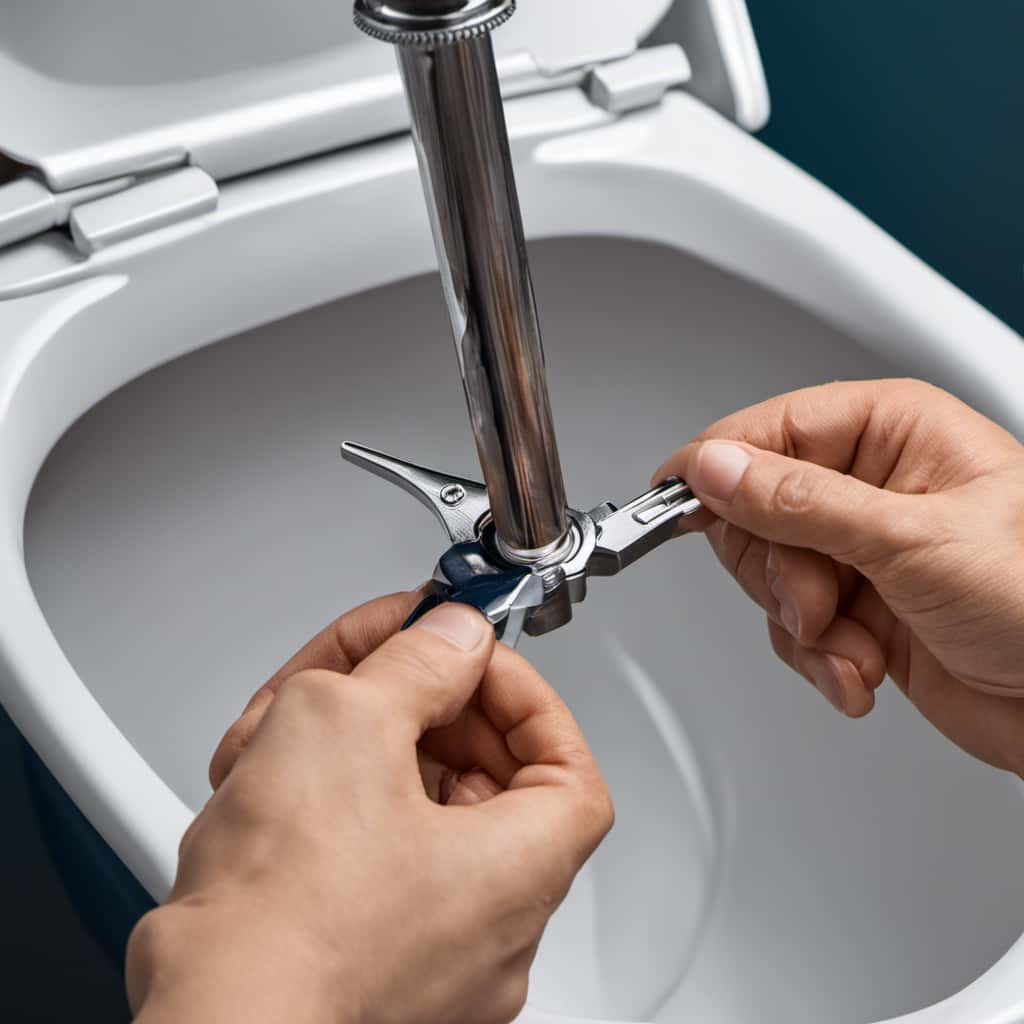
To start, proper installation is key. Ensure that the valve is securely attached to the toilet tank, following the manufacturer’s instructions.
Regular cleaning is also essential. Use a mild detergent and a soft cloth to clean the valve and surrounding areas, removing any debris or mineral deposits that may affect its functionality.
Additionally, be vigilant for any signs of leakage or malfunction. If you notice any issues such as weak flushing or continuous running, it’s crucial to troubleshoot the problem promptly.
Check for loose connections, damaged components, or clogs that may be obstructing the valve’s operation.
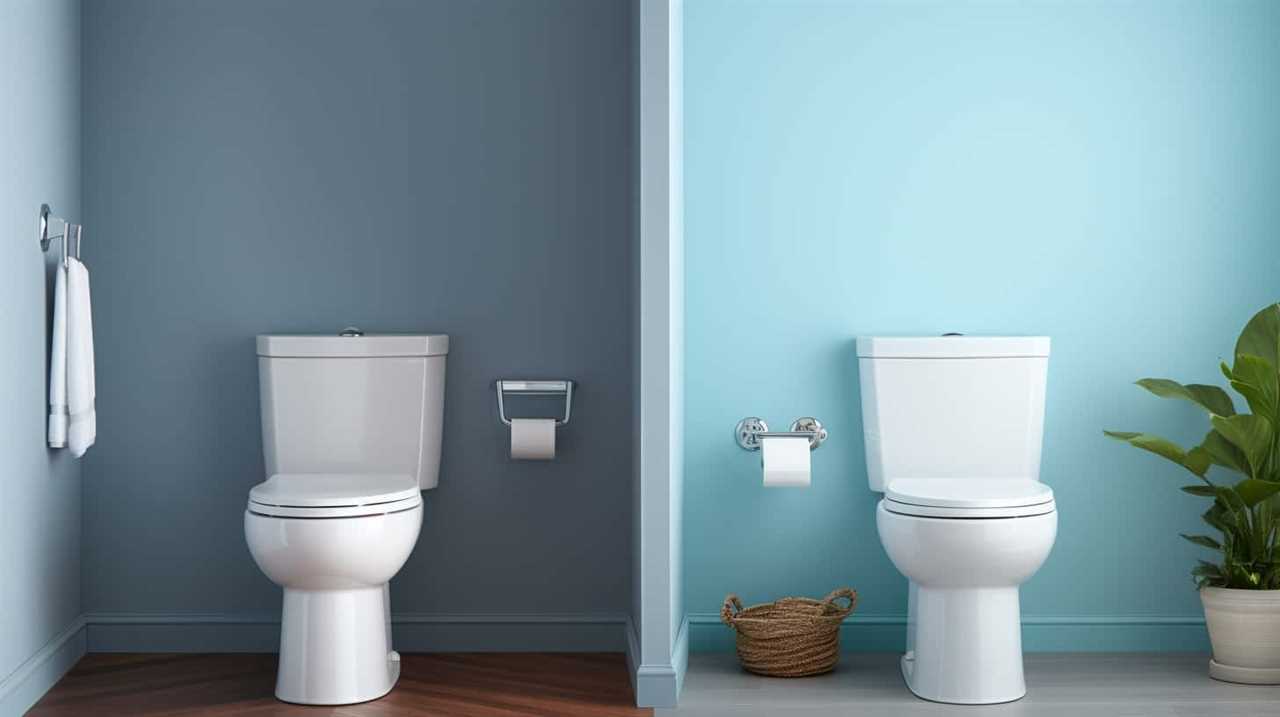
Frequently Asked Questions
How Do I Know if My Toilet Has an Old Style Flush Valve?
To determine if your toilet has an old style flush valve, examine the mechanism inside the tank. Look for a flapper or a ball float. These components are typically found in older toilets.
Can I Still Find Replacement Parts for an Old Style Flush Valve?
Yes, you can still find replacement parts for an old style flush valve. However, upgrading to a newer model would offer benefits like improved water efficiency and easier maintenance.
Are There Any Disadvantages to Upgrading to a Modern Flush Valve?
There are indeed disadvantages to upgrading to a modern flush valve. However, the benefits of upgrading are numerous. Modern flush valves offer improved water efficiency, better performance, and easier maintenance, making them a wise choice for those seeking an upgrade.
Will Upgrading My Old Style Flush Valve Require a Professional Plumber?
Upgrading an old style flush valve may require a professional plumber, depending on the difficulty level. However, there are also DIY options available for those with the necessary skills and knowledge.
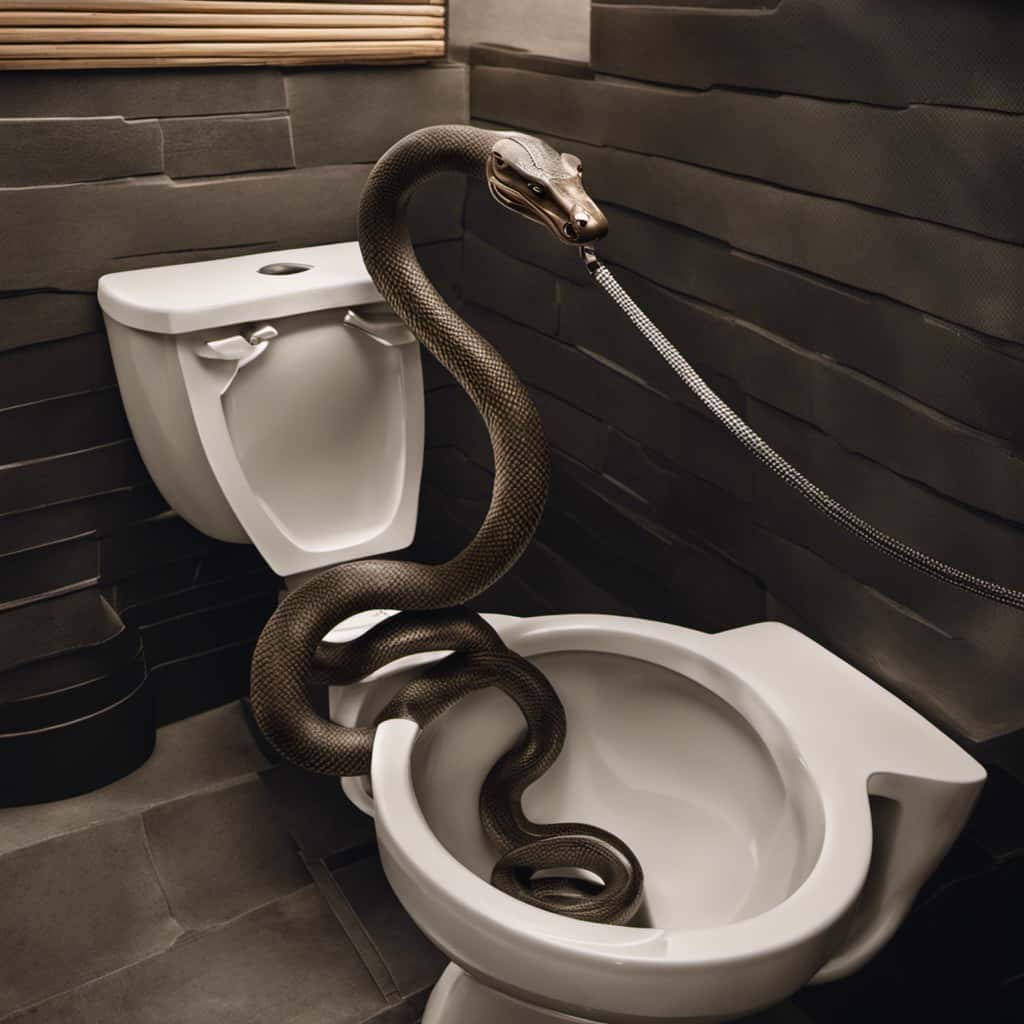
How Often Should I Clean and Maintain My New Flush Valve?
Regular maintenance is crucial for optimal performance of a new flush valve. Cleaning should be done every 6-12 months, or sooner if signs of dirt or blockage are observed. It’s best to consult a professional for assistance.
Conclusion
In conclusion, upgrading your old style toilet flush valve to a modern one is like replacing an outdated engine with a high-performance motor. It not only resolves common issues, but also provides efficient and reliable flushing, saving you time and water.
With regular maintenance, your new flush valve will ensure a hassle-free and hygienic bathroom experience for years to come. Don’t settle for outdated technology when you can enjoy the benefits of a modern flush valve.
